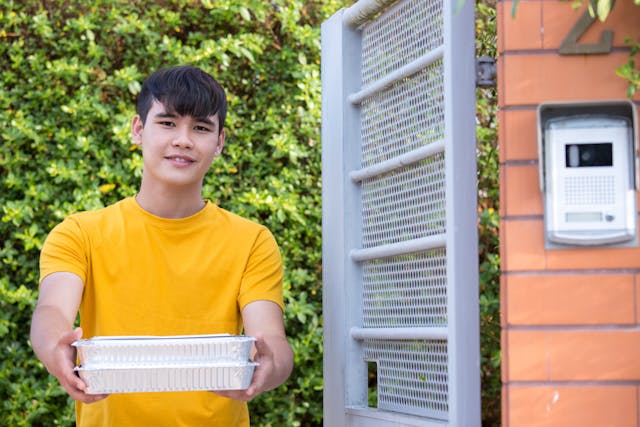For homeowners in areas prone to high winds, like coastal Florida, the durability of metal gates hinges on expertly welded hinges. With strong winds frequently impacting outdoor structures, the right welding techniques are crucial to keeping gates secure and functional. Jupiter welding professionals from Oceanside Welding and Fabrication understand that when hinges are properly reinforced and crafted with durable metals, they can withstand the challenges of a high-wind climate. This guide covers the importance of strong welded hinges, exploring the materials, techniques, and maintenance practices needed to protect metal gates against wind damage and extend their lifespan.
Hinge Reinforcement with Welds
1. Enhanced Wind Resistance
Reinforcing hinges with welded joints allows the gate to better withstand the impact of strong winds. Welded hinges hold up against the stress placed on them by forceful gusts, preventing the gate from loosening or even breaking away.
2. Prevents Structural Weakness
Weak or inadequately secured hinges are more likely to fail over time, especially under the repeated strain caused by high winds. Professional welders can apply specific Florida welding techniques that add layers of strength to the hinge joint, minimizing the chances of detachment.
3. Added Stability for Moving Parts
Gates are frequently moved, which means their hinges endure constant stress. Welded reinforcement makes them less prone to loosening or warping from regular use. Strong hinge welds provide added stability, ensuring the gate’s movement remains smooth while also preventing potential hinge failures during high winds.
Choosing Durable Metals for Hinge Welding
1. Rust-Resistant Metals
Corrosion-resistant metals like stainless steel and galvanized steel are popular choices for hinge welding in high-wind areas. These materials are known for their ability to resist rust, which is especially beneficial in humid climates where moisture can lead to corrosion.
2. High-Strength Alloys
Aluminum and titanium alloys are also great options for hinge construction due to their balance of strength and lightweight. These metals can endure high stress and impact without adding unnecessary bulk, which can be advantageous for gates in windy areas.
3. Suitable for Coatings
Durable metals are also often compatible with protective coatings, which adds an extra layer of protection. When paired with high-quality welds, the right metals can provide both the strength needed to resist strong winds and the corrosion resistance needed for Florida’s climate.
Weld Testing for Impact Resistance
1. Stress Testing
Professional welders use stress testing techniques to simulate the impact of high winds and other environmental factors. This testing process helps identify potential weaknesses in the welds and ensures that the hinges can handle real-world conditions without failure.
2. Evaluating Weld Depth
Weld depth plays a critical role in the durability of the hinge. Testing can help assess whether the weld penetrates deeply enough into the metal to create a strong, lasting bond. If the weld lacks sufficient depth, the hinge may be more vulnerable to detachment under heavy wind.
3. Resistance to Shock and Vibration
High winds can create vibrations that may impact a gate’s stability over time. Weld testing for shock and vibration resistance helps verify that the hinge welds can withstand these forces without loosening or weakening.
Protective Coatings on Hinges
1. Corrosion Resistance
In Florida’s humid climate, even strong metals are prone to rust. A protective coating serves as a barrier against moisture, preventing corrosion that can weaken the welded joints over time.
2. Enhanced UV Protection
Sun exposure can cause the metal to weaken or discolor, particularly if the gate is located in an open area. Coatings with UV protection shield the hinges from the effects of sunlight, extending their aesthetic appeal and overall durability.
3. Extra Layer for Impact Absorption
Some coatings are designed to absorb impact, which adds another level of protection to hinges that face high winds. These coatings help reduce the effects of wind-borne debris that might strike the gate, preserving the integrity of the welds.
Routine Maintenance on Welded Hinges
Routine maintenance plays an essential role in preserving welded hinges and ensuring the long-term functionality of a Florida metal gate in high-wind areas. Regular checks and upkeep can prevent minor issues from developing into major problems.
1. Inspection for Rust and Wear
Regularly inspecting welded hinges for signs of rust, wear, or cracks is crucial. Catching these issues early allows for timely repairs, preventing damage that could lead to structural weaknesses in the gate.
2. Lubrication for Smooth Movement
Applying lubrication to hinges ensures they move freely and reduces strain on the welded joints. This is especially important in high-wind areas, where resistance-free movement helps prevent hinges from wearing out prematurely.
3. Re-Coating as Needed
The elements can gradually wear off protective coatings. Reapplying coatings as part of a maintenance routine can protect hinges from moisture and UV damage, extending their lifespan.
Conclusion
The strength of a metal gate in high-wind areas largely depends on the quality of its welded hinges. Strong, durable welds, made from the right metals and reinforced with protective coatings, are essential for ensuring gates remain secure and stable in intense weather conditions. Welding Fort Lauderdales experts understand the importance of professional hinge welding, which includes impact testing, the use of rust-resistant materials, and ongoing maintenance practices. With these strategies, property owners can confidently invest in a metal gate that will stand up to Florida’s wind and weather, keeping properties secure and visually appealing for years to come.
